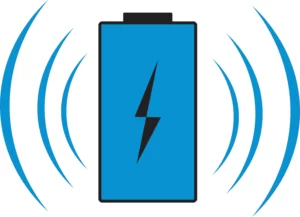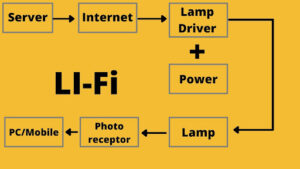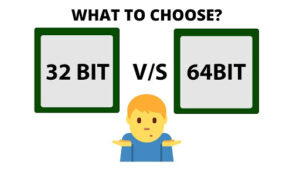TYPES OF NETWORKS
In diverse sectors of society, the networking of PCs has been developed for all levels, from local to
international. Examples are networks used by
government organizations for rapid retrieval of information from the database at
central locations. Merchants and Banks also use networks to transfer credit verification and funds. PCs used corporate offices to get
information on activities at its branch offices, etc. The following are the
types of computer networks :
international. Examples are networks used by
government organizations for rapid retrieval of information from the database at
central locations. Merchants and Banks also use networks to transfer credit verification and funds. PCs used corporate offices to get
information on activities at its branch offices, etc. The following are the
types of computer networks :
* Local Area Network (LAN): In a LAN we can connect computers, printers, routers and any other network-attached devices. LAN is a type of computer network that spans a small area. Most LANs are confined to a single building or groups
of buildings. However, one LAN can be connected to other LANs over any distance
via telephone lines and wireless circuits. LANs are capable of transmitting
data at a very high speed, much faster than what can be transmitted through a
telephone line. But the distances are limited. There is a limit that, how many computers we can attach to a single LAN. There are several
different protocols(Ethernet Token Ring, etc.), each with its own advantages
and disadvantages. The owners usually provide and maintain the transmission
media for a LAN maximum data transfer rate of 100 Mbits / sec or more. LAN is
further described in detail.
of buildings. However, one LAN can be connected to other LANs over any distance
via telephone lines and wireless circuits. LANs are capable of transmitting
data at a very high speed, much faster than what can be transmitted through a
telephone line. But the distances are limited. There is a limit that, how many computers we can attach to a single LAN. There are several
different protocols(Ethernet Token Ring, etc.), each with its own advantages
and disadvantages. The owners usually provide and maintain the transmission
media for a LAN maximum data transfer rate of 100 Mbits / sec or more. LAN is
further described in detail.
* Wide
Area Network (WAN): The term WAN usually refers to a network that covers a
large geographic area. Numerous WANs had been constructed, including public packet networks, banking networks, large corporate networks, military networks, airline reservation networks, and stock brokerage networks. Some WANs are very
extensive, spanning the globe. WAN is further described in detail.
Area Network (WAN): The term WAN usually refers to a network that covers a
large geographic area. Numerous WANs had been constructed, including public packet networks, banking networks, large corporate networks, military networks, airline reservation networks, and stock brokerage networks. Some WANs are very
extensive, spanning the globe. WAN is further described in detail.
* Metropolitan
Area Network (MAN): A MAN is a network that interconnects users with
computer resources in a geographic area or region larger than that covered even
by a WAN. It is a network of data designed for a town or city. MANs are usually
characterized by very high-speed connections using fibre optic cable or other
digital media. A MAN can be supported by both data and voice that might even be related to the local cable T.V. network. It usually provides a “backbone” that
connects several LANs and may be owned by a single organization or may lease
service services to users. Several protocols exist, namely, FDDI( Fibre Distributed
Data Interface), DQDB(Distributed Queue Dual
Bus), each with its own topology. They may have a high data transfer
rate, 100 Mbits/sec or more. Man is further in detail.
Area Network (MAN): A MAN is a network that interconnects users with
computer resources in a geographic area or region larger than that covered even
by a WAN. It is a network of data designed for a town or city. MANs are usually
characterized by very high-speed connections using fibre optic cable or other
digital media. A MAN can be supported by both data and voice that might even be related to the local cable T.V. network. It usually provides a “backbone” that
connects several LANs and may be owned by a single organization or may lease
service services to users. Several protocols exist, namely, FDDI( Fibre Distributed
Data Interface), DQDB(Distributed Queue Dual
Bus), each with its own topology. They may have a high data transfer
rate, 100 Mbits/sec or more. Man is further in detail.
* Value-Added
Network (VAN): It is a communication channel leased from a telephone company to
offer customers with modems access to network services through a local or toll-free network.
Network (VAN): It is a communication channel leased from a telephone company to
offer customers with modems access to network services through a local or toll-free network.
* Backbone: Backbone is a high-speed network that connects various LAN segments. These LANs
should be interconnected with a backbone network that has direct connections
to0 all the LAN segments. When a LAN has a backbone, each pair of LAN segments
can communicate without passing through a third party LAN segment.
should be interconnected with a backbone network that has direct connections
to0 all the LAN segments. When a LAN has a backbone, each pair of LAN segments
can communicate without passing through a third party LAN segment.
* Campus
Area Networks (CANs): The computers that are within a limited geographic area,
such as campus or military base.
Area Networks (CANs): The computers that are within a limited geographic area,
such as campus or military base.
* Home
Area Networks (Hans): It is a network contained within a user’s home that
connects a person’s detailed devices.
Area Networks (Hans): It is a network contained within a user’s home that
connects a person’s detailed devices.
* Wireless/mobile network: In
these networks, transmission media includes infrared light, radio channels, microwave
radio, cellular telephone networks and satellite relays. Her, the transmission
rates vary with the media, from under 1 Mbits/ sec up to Gbit/sec range for
satellite relays.
these networks, transmission media includes infrared light, radio channels, microwave
radio, cellular telephone networks and satellite relays. Her, the transmission
rates vary with the media, from under 1 Mbits/ sec up to Gbit/sec range for
satellite relays.




